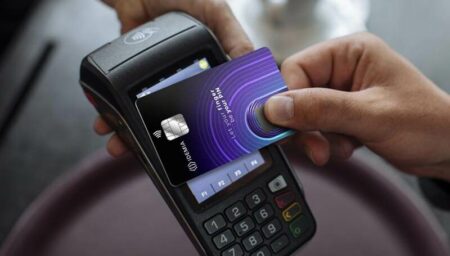Let your finger be your PIN with F.CODE


Biometrics has seeped into many aspects of our lives. Whether you’ve unlocked your smartphone using your fingerprint, crossed a country border or even walked down the street in a connected city, biometrics has touched a part of your life – and most likely simplified it or secured it in some way.
Our fingerprints are entirely unique and remain unchanged throughout our lives – as we grow, age, gain or lose weight, it never changes (the same can’t be said for an identity photo). For this reason, biometrics began with the capture and use of fingerprint data. For years, police collected fingerprints left behind at crime scenes and cross-referenced the evidence with a database of persons of interest. In recent years, biometric technology in this field has undergone a huge revolution fueled largely by digitalization. With video investigation tools, the police experts can now scan camera streams to identify an individual’s face on a crowded street or efficiently search through hours of video footage for clues after a major security incident.
As biometric technology continues to evolve, societies find more ways to integrate it in the everyday lives of citizens. Today, biometric data gives citizens the fundamental right of being recognized by their government and opens access to a multitude of services, such as social benefits, medical care or financial services. And while fingerprints remain the go-to form of biometric data, there are some specific circumstances that have given rise to a dual verification process.
In 2009, IDEMIA joined an ambitious project led by the Indian government: attributing a unique ID number to every resident in India – a country of more than 1.3 billion people. The Aadhaar program has been extremely successful; and one of the key success factor of this program was to use multiple biometric credentials to address a well-known challenge with the fingerprints of a subset of the population. Indeed, fingerprints for example of manual laborers, over time, can become difficult to scan or match. This is why the Aadhaar program integrated iris scans as a secondary source of identification, thereby bolstering security for every citizen.
In some countries, the use of biometrics is also an efficient means for governments to reach out to citizens and grant them access to fair elections. When citizens in rural areas of Africa need to access voter registration, IDEMIA’s MorphoTablet 2i provides the all-in-one solution. This mobile biometric terminal is capable to enroll citizens using three types of biometric data (fingerprint, face and iris) and, given its portability, it is the ideal tool even in the most remote areas.
Many factors determine which form of biometric data is the most appropriate in any given scenario. For example, in air travel, facial recognition is the gold standard. When the ICAO international standard first required a photo as the mandatory biometric element for all passports, it set the trend for the industry. Today, biometric technology in airports relies mainly on facial recognition systems to verify traveler identities.
A wonderful example of biometrics at its best is the terminal T4 at Changi airport in Singapore. To keep up with the thousands of people passing through Changi each day, the airport relies on facial recognition technology: from self check-in to replacing boarding cards and even payment at duty free shops. This increases security, optimizes resources at the border and streamlines the passenger journey.
While the advantages are many, we’re only just scratching the surface of possibility. In recent years, biometrics has seen widespread adoption following its integration into smartphones. The fingerprint scan first, then facial recognition have made biometrics a part of our everyday life. Today, our biometric data unlocks our phones with innovations such as IDEMIA’s 3D Face for instance, but use cases are multiplying exponentially – from securely identifying ourselves via our smartphone to open a bank account or remotely sign up for a new mobile data plan to replacing our payment card PIN code with our fingerprint.
The benefits of everyday biometrics will continue to drive adoption rates. Tomorrow, we may find ourselves in a world free of passwords. A world where passwords for any site or any service are replaced by something that is highly secure and never forgotten: our own biometric data.